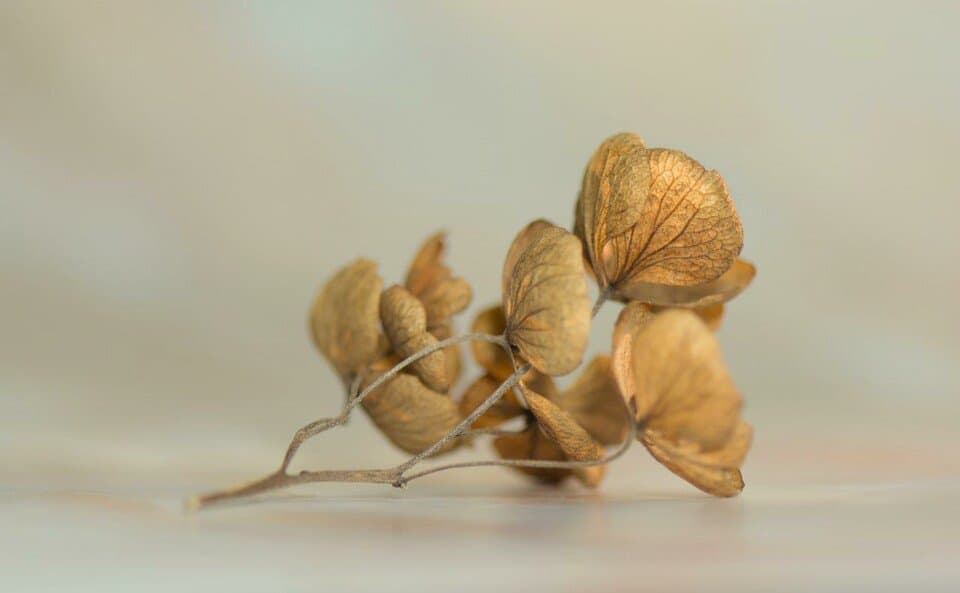Some links in the post are affiliate links and I get a commission from purchases made through some links found in the post.
Hydrangeas are shrubs found in America and parts of Asia, they are known for their varying color which adds life to any space.
Hydrangeas may seem hard to care for, but it is actually the opposite. If your hydrangea is dying, it means that your care routine is missing something important.
The main reasons your hydrangea is dying is due to drought stress, direct sunlight, transplant shock, pest and diseases, root rot, too small pots, excess fertilizers and frost damage.
Other contributing factors can cause your hydrangea to wilt and this article has covered all of them. Keep reading to discover more about the causes of this problem and the possible solutions.
Reasons your Hydrangeas are Dying
Dehydration of your hydrangea plant can be identified as the most common cause of your hydrangea dying, but this section explores other reasons aside from lack of moisture that can contribute greatly to the wilting of your hydrangea.
1) Drought Stress
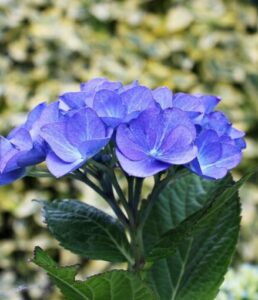 This might just be the most obvious reason your hydrangeas are dying. Hydrangeas thrive in an environment that is constantly moist and soil that lacks water will exhibit the following symptoms;
This might just be the most obvious reason your hydrangeas are dying. Hydrangeas thrive in an environment that is constantly moist and soil that lacks water will exhibit the following symptoms;
- Leaves and flowers wilting and drooping
- Browning of leaves and flowers
- Curling of leaves
Having soil that drains easily also contributes to drought stress. Hydrangeas require a soil capable of retaining the amount of moisture needed for growth and growing this plant on sandy soil or soil filled with rocks is not the ideal environment for proper growth.
Other conditions like high temperature and changes in other environmental factors can also lead to this plant being dehydrated.
When there is little moisture in the soil of this plant, the leaves, flowers, and roots all compete for this moisture.
2) Intense and Direct Sunlight
Hydrangeas are plants that love an environment with mild and indirect sunlight, exposing this plant to intense and direct sunlight will lead to the leaves and flowers scorching up and having sunburn.
This high amount of sunlight can also lead to your hydrangeas being drought stressed or dehydrated because this high amount of sunlight can strip the soil of moisture relevant for the well-being of this plant.
Some common symptoms of sunburn in your hydrangea include;
Exposing this plant to too much sun for about six hours will cause it to gradually wilt because of a faster rate of transpiration.
3) Transplant Shock
After propagation of a hydrangea plant, it will need to be transferred to a pot where it will remain permanently.
Not all hydrangeas survive the transplanting stage as transitioning to a new environment may be difficult, this is mostly a result of great the difference in environmental and care conditions between its initial home and current home.
Some signs of transplant shock include;
- Gradual browning of leaves and other parts of the plant
- Drooping or wilting after transplant
Hydrangeas likely to die after transplant are those that were propagated during summer when the light intensity and temperature are high.
It is best to transplant hydrangeas that have been planted during spring.
4) Pests and Diseases
Root aphids and powdery mildew are the pests common to hydrangeas and while they don’t attack often, they can cause your plant to wilt.
Root aphids target the new growth of your plant while powdery mildew feeds off nutrients in the soil. Some signs of pest attack on your hydrangea include;
- Reduced bloom production
- Yellowing or browning of leaves
- Distortion of shoots
- Wilting
5) Root Rot
Root rot is a condition that affects most plants that grow in wet areas. Hydrangeas can be grown indoors or outdoors and no matter the environment they are grown in, they are still prone to root rot.
Root rot is often caused by your plant soil receiving too much water or humidity and under these conditions, the fungi that cause root rot (Pythium, Phytophthora, Rhizoctonia, or Fusarium) grow.
Identifying root rot in your hydrangea plant can be done by looking out for the following symptoms.
- Stunted growth
- Drooping of leaves
- Browning or yellowing of leaves
- Foliage and shoots die
- Brown or black roots with a soft texture
If your hydrangea is afflicted with root rot, it will have trouble absorbing moisture or nutrients from the soil.
6) Small Pots
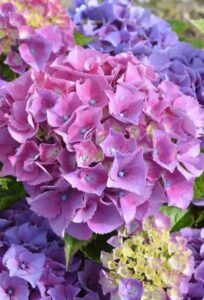 Your hydrangea may be dying because of a minor problem like a small pot.
Your hydrangea may be dying because of a minor problem like a small pot.
Hydrangeas require moisture at all times and housing this plant in a small pot will lead to the moisture drying up easily and this can cause drought, when this plant is deprived of moisture it transpires which will lead to your hydrangea dying.
Hydrangeas have a fibrous root system that requires a bigger pot to accommodate the growth of this root system and a small pot can only sustain little soil.
Hydrangeas being in a small pot are easily affected by intense sunlight and high temperatures.
7) Excess Fertilizer
Nutrients are important to the growth and well-being of your hydrangea, but too many of it can cause more harm than good.
If your hydrangea is planted on good soil that has been fertilized then there is no need to apply fertilizer frequently, excess application of fertilizer to this plant can cause root burn.
Some signs of root burn caused by the excess application of fertilizer include;
- Browning of the edges of this plant
- Stunted growth
- Brown roots
You may apply fertilizer when your hydrangea is planted on a sandy soil which doesn’t have sufficient nutrients.
8) Frost Damage
Hydrangeas don’t do well during winter, severe exposure of hydrangeas to this weather condition can cause death of new growth of plants and the flower buds which can prevent flowering.
Frost damages your hydrangea by freezing the water inside the plant and this damages the cell wall and kills other parts of the plant. Some symptoms of frost damage to your hydrangea include;
- Affected foliage turns purple or reddish
- Wilting
- Affected foliage may turn black and have a dry look
- Your hydrangea does not produce flowers
Here is a guide on what to do with your hydrangeas in the fall.
How to Stop your Hydrangeas from Dying
It’s not too late to save your hydrangeas if the symptoms are still mild. Here are some steps you can take to ensure that your hydrangea becomes healthy again.
1) Water your Hydrangea
If your hydrangea plant is already situated at an area that receives a decent amount of moisture, then there is no need for additional watering.
If your hydrangea is being raised on a soil like a sandy one that drains easily, then it is advised that you dig up your plant and mix the soil with lots of organic matter that is capable of retaining some moisture.
Contact a professional to get this done.
The amount of water you supply to your soil depends on the climate of the area and the soil type of your hydrangea.
2) Reduce Fertilizer Application
Hydrangeas that were grown on a healthy soil mix from start will rarely need fertilizer that is why it is recommended to apply fertilizer to your hydrangeas once a year.
For sandy soil with a low nutrient composition, fertilizers will be needed to aid the growth and health of this plant. The right type of fertilizer to use is a mild one that contains nitrogen, phosphorus, and potassium (NPK).
Applying fertilizer to soil that already has organic matter will cause the nitrogen to burn the root of your hydrangea and also make the leaves brown, you should cut off any leaves or flower that has been affected by excess fertilizer.
To reduce the amount of fertilizer in your soil, water your hydrangea every few days to reduce the concentration of this chemical in the soil. Be careful not to saturate the soil with water during this process.
3) Change the Location of your Hydrangea
Using a small pot to grow a hydrangea can limit the growth of the fibrous roots, this can also lead to the roots getting stuck to the bottom of the pot.
The best solution to this problem is to grow your hydrangea in a wide and deep, pot this size will allow the soil to hold more moisture and prevent drought.
Since the roots of hydrangeas grow extensively, it is recommended that you repot this plant to a larger one after every two years as the roots can become pot bound.
If you choose to stick with a small pot, then you will need to supply the soil with moisture frequently, and to prevent water from being saturated in the soil, make holes at the bottom of the pot to create a proper drainage system.
After repotting your hydrangea, you should observe some significant recovery.
4) Fighting Frost Damage
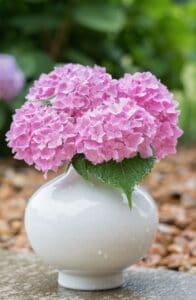 Hydrangeas do not tolerate cold weather or winds that have a temperature below 50°F – 60°F (10°C – 15.5°).
Hydrangeas do not tolerate cold weather or winds that have a temperature below 50°F – 60°F (10°C – 15.5°).
A cold environmental condition will freeze up the moisture in the leaves and will prevent other parts of the plants from receiving them, this frozen moisture in the leaves also destroys the cell wall and this causes the leaves to start browning.
When frost damage starts, you will need to wait until the weather is warm before you can help your hydrangea recover and this recovery method is done by pruning.
Use a clean and sharp object to cut off the discolored or dead leaves, this will allow your plants to grow new parts.
Hydrangeas will require a reasonable amount of energy to produce these new parts, so they must get the appropriate care condition.
It is advised that you apply the appropriate amount of fertilizer after the pruning cuts heal, this application will facilitate the growth of new parts.
Another helpful tip is to avoid fertilizing your hydrangeas after August as new growth starts to develop, these new growths include the developing flower bud which is susceptible to frost damage.
Damage to the flower bud can stop flowering in your hydrangeas.
5) Smooth Transitioning
Some hydrangeas are at risk of dying after transplant from their initial environment to their new environment.
This problem can be fixed by transplanting your hydrangea during spring or fall as it is the best period to grow this plant.
Hydrangeas are grown in a nursery under consistent and accurate temperature, humidity, light intensity, and water content.
Mimicking these conditions after transplant will help keep this plant alive, you can gradually introduce slight changes in these conditions to help your hydrangea adjust to its new environment.
Prepare the right soil mix that is rich in organic matter before the transplant, and ensure that other factors that will not support the growth of hydrangeas are adjusted.
6) Tackle Root Rot
Root rot is caused by overwatering your soil and it can lead to the death of your hydrangea.
Plants with root rot can only recover if detected early and in most cases, you will need to get a new hydrangea and change your watering routine.
If your plant has been exposed to saturated soil for some time, you can save it by making proper drainage channels to eliminate the excess water.
You can carefully remove your hydrangea from the soil and inspect the roots.
If it is soft and black compared to its usual white color and firm texture then use a clean and sharp pruner to snip out the infected roots and allow new healthy ones to grow, using a cloth soaked in disinfectant, wipe the pruners after each cut to avoid spreading these fungi.
Plant the hydrangea in soil with good drainage and not in its previous location as it may be hosting the fungi that cause root rot, you can treat the soil with fungicide and allow it to stay without use for some weeks.
Transplanting your hydrangea into a better soil with good drainage should aid its recovery.
7) Eliminate Pests and Diseases
Getting rid of pests and diseases on your hydrangea can be done by pruning out the infected part or using pesticides.
You can also consider a homemade remedy for this problem, a good one is the mixture of dish soap and water which can be applied to this plant using a spray bottle.
Be sure to isolate the infected plant from others to ensure that these pests do not spread further.
8) Treat Sunburn
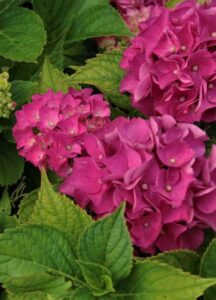 Sunburn causes the leaves of your hydrangea to turn brown and have a dry look as well. Some species of hydrangea prefer to grow under full shade while others will do better when exposed to some sun as it aid flowering.
Sunburn causes the leaves of your hydrangea to turn brown and have a dry look as well. Some species of hydrangea prefer to grow under full shade while others will do better when exposed to some sun as it aid flowering.
To treat sunburn, it is important to know the balance point in the amount of sunlight your hydrangea should receive, flowering is inhibited under too much shade, but to facilitate the flowering process, this plant should be exposed to morning sun for some hours and then it should sit under a mild midday sun which can be made possible by partial shade.
Since sunburn in hydrangeas can be associated with drought stress, some solutions like the application of adequate water and fertilizer can help save your hydrangea from dying by sunburn.
Relocating your plant from its initial position or creating a shade will also help its recovery from this problem.
How to Prevent your Hydrangea from Dying
You can prevent your hydrangea from dying by taking some precautions. Most of these tips focus on proper care for this plant to prevent any problem that may cause death to your hydrangea.
1) Mulching
Mulch serves as a protective layer for the soil of your hydrangea but most importantly, it helps to conserve moisture in the soil during hot days.
Some organic materials can be used as mulch as they will eventually decompose to add nutrients to the soil, some of these organic materials include; leaves, compost, and pine straws.
Thick mulch should be applied 3 to 5 inches deep while lighter one can be applied deeper.
Mulching also protects your hydrangeas during winter. To prevent frost damage, cover the soil with mulch that is at least 18 inches deep, if you can make a cage for the entire plant using mulch then do so to prevent frost damage at all cost.
2) Use the Right Soil
The ideal soil type for growing hydrangeas contains a lot of compost and organic materials so the application of fertilizer will not be needed.
This plant is capable of growing in alkaline and acidic soil, some flowers are known to change their color with a change in the soil pH although this does not apply to species with white or lime green flowers.
A good soil should be able to hold moisture and at the same time have a good drainage system. a soil lacking these properties is not ideal for growing healthy hydrangeas and will need to be replenished with organic matter to improve its moisture holding capacity.
3) Use the Right Pot
If you decide to grow your hydrangea indoors, then do not make the mistake of using a small pot.
The roots of this plant grow extensively and a small pot will only lead to competition for water which can cause drought.
The recommended pot size should have a diameter between 16 – 20 inches, your pot should also have drainage holes at the bottom to prevent the soil from being saturated with water.
These holes should be cleaned regularly to ensure a smooth flow of excess water out of the pot, an alternative is to use gravel at the bottom of your pot to prevent compacted soil from hindering the flow of excess water.
Preventing excess water in the soil of your hydrangea is important to avoid root rot which can kill this plant.
4) Care for your Hydrangea the Right Way
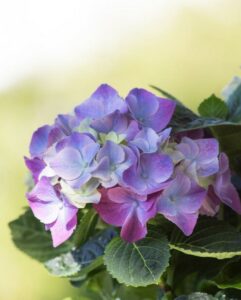 It is easy to care for hydrangeas and understanding the proper care routine for this plant will keep it healthy.
It is easy to care for hydrangeas and understanding the proper care routine for this plant will keep it healthy.
Your hydrangeas should be deeply watered 3 times a week, especially at the early stage of growth, deep watering should be done in the morning when your plant is about to receive some sunlight.
With healthy soil, some species of hydrangeas will not require the application of fertilizer while others will.
Species like Bigleaf and Oakleaf hydrangeas do best with the application of light fertilizers during spring while smooth hydrangeas will need to be fertilized once during winter.
Excess fertilizer in your soil also causes a build-up of salt in the soil, this can affect the ability of your soil to absorb water so it will be helpful to supply your soil with
Oakleaf hydrangea is known for its ability to grow under shade, but a lot of hydrangea species usually thrive with a mixture of morning sun and indirect daylight sun, before planting your hydrangea outdoors, it is recommended that you select an area close to a tree where the sunlight that reaches this plant can be regulated.
This way your hydrangea does not receive direct and intense sunlight for a long time.
Some types of hydrangeas are selective when it comes to environmental conditions, this is why it is recommended that you grow a hydrangea that can tolerate the climate factors of your region.
According to UConn Home and Garden Education Center, the best type or specie of hydrangea for a hot region is Oakleaf as it can tolerate direct sunlight and partial shade.
Bigleaf hydrangea is known for its intolerance of cold weather hence it will need protection during this period.
A good recommendation for winter protection by the Chicago Botanic Garden is to fill the area of your hydrangea with shredded leaves (a foot deep) for insulation.
5) Pruning
Pruning is an important practice to promote the growth of this plant and improve the production of flowers.
Some of the most common species of hydrangeas are pruned after their flowers fade in summer, pruning should not be done after late summer as flower buds form during this period.
Below is a table showing the different species of hydrangeas and the appropriate time to prune them.
| Specie of hydrangea | When to prune | Location of new flowers |
| Bigleaf | After flowering during summer | On old growth |
| Oakleaf | After flowering during summer | On old growth |
| Panicle | Before spring growth in late winter | On new growth |
| smooth | Before spring growth in late winter | On new growth |
| mountain | After flowering during summer | On old growth |
| climbing | After flowering during summer | On old growth |
For some rare species of hydrangeas, pruning is only done to remove dead branches and not to shape the plant.
6) Protect your Hydrangeas Against Pests
It is rare for hydrangeas to get attacked by pests and diseases but sometimes the attack of root aphids and powdery mildew can be severe so preventing this problem is better than curing it.
These pests and diseases can cause discolorations, stunted growth, and death of your hydrangea, you can utilize homemade solutions to tackle this problem.
Do not overwater this plant as it provides a breeding medium for these pests and diseases.
Final Thoughts
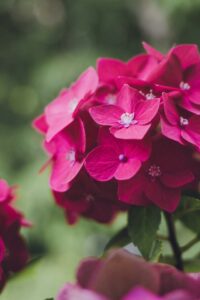 If you notice your hydrangeas dying, it can be as a result of various factors like overwatering, excess fertilizer, pests, diseases, or root rot.
If you notice your hydrangeas dying, it can be as a result of various factors like overwatering, excess fertilizer, pests, diseases, or root rot.
This guide covers all the possible causes of your hydrangea dying, the symptoms of each cause are also listed. We have provided some ways to fix and prevent this problem as well.

